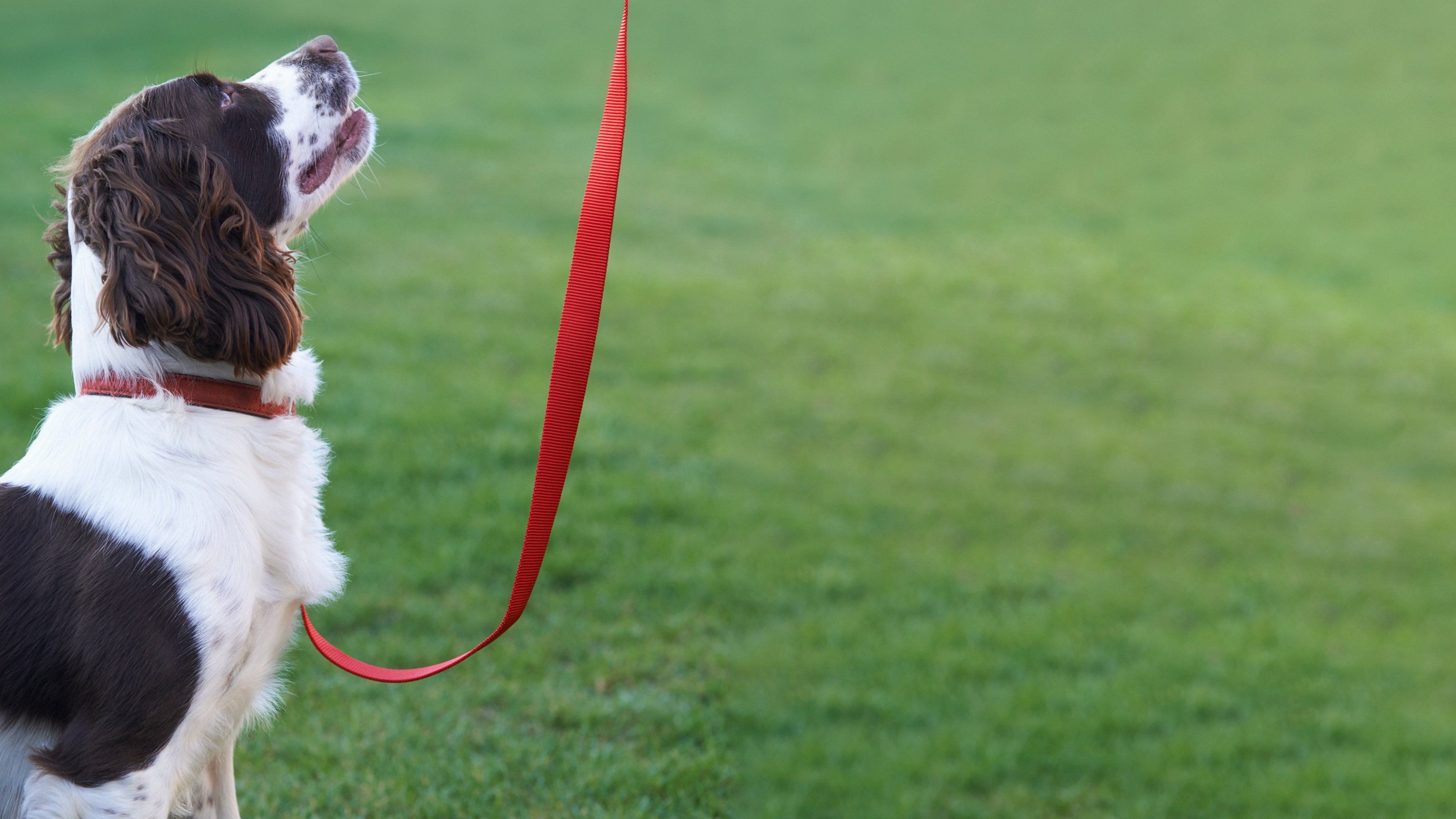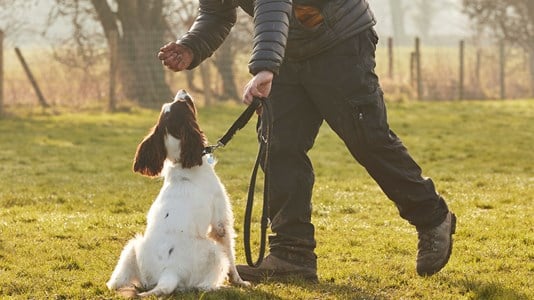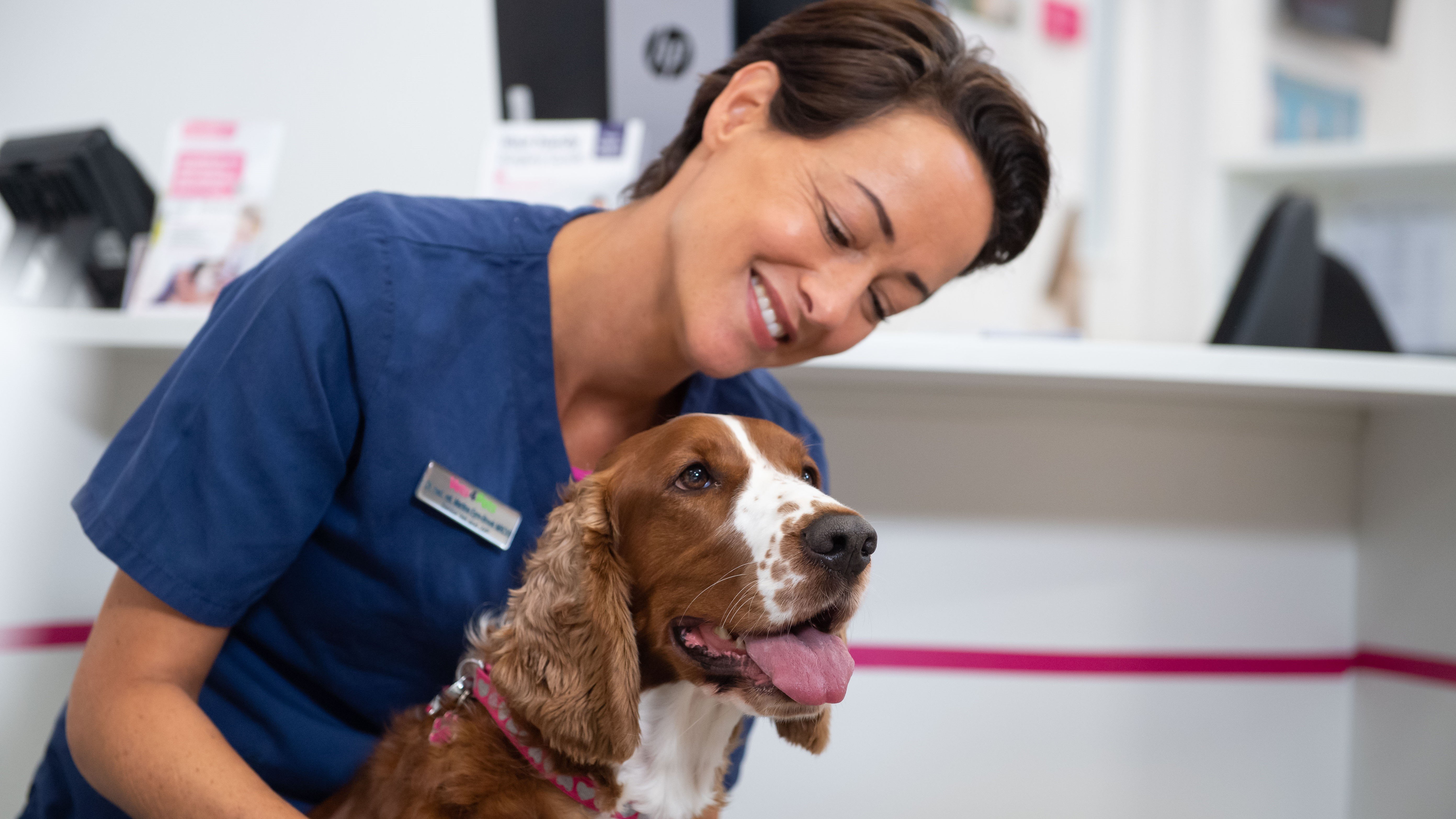
Positive Reinforcement for Dogs
Training is important for all dogs, but can be frustrating – after all, you and your dog speak different languages!
Positive reinforcement works on the basic premise that if you reward your dog for doing something, they are likely to do that action again – after all, it got a great result last time! This positive feedback is a great way to teach your dog how you want them to behave and should be applied to all aspects of training your dog.
Training can feel overwhelming but we are here to help. For advice and support, contact your local Vets4Pets.
More about positive reinforcement
Training is important for all dogs, but can be frustrating – after all, you and your dog speak different languages! Learning to communicate is one of the basic lessons you will need to learn in order to be able to train your dog effectively. That being said, positive reinforcement can be explained in basic terms through looking at human-human interactions.
Think about if you are being instructed on how to act by another person. If you have to act a certain way or face a punishment, you may do that action, but you won’t feel very kindly to the person putting you in that situation. You also might feel frustrated, or even angry. If you know that if you act a certain way you might get a reward, or praise, you are likely to feel much more positive about doing that action. You might try to do it better, in order to increase your chances of being rewarded, and your general feeling would be enjoyment and engagement. This is positive reinforcement, and it works really well for dog training too!
Whenever your dog performs and action or a behaviour that matches how you want them to behave, give them a reward. This can be treats, praise, play, a favourite toy or something else that make them feel good – usually, food gets the fastest result! Importantly, the reward has to be given in conjunction with the action or behaviour being done – dogs will associate things that happen to them with the action they were performing at or around that time. If you wait until too much later to give the treat, you’ve missed you opportunity and your dog might instead associate your praise with what they are doing now instead, which could be completely different!
Your dog will soon learn that behaving well (e.g lying quietly in a certain room, going into their crate at night, asking to go out to the toilet, sitting in response to your cue) means a reward! This encourages co-operation and reduces the ability to perform unwanted behaviours. After all, why would you bark if you get a reward for being quiet?
Working together, rather than using the out-dated ‘pack/submission’ training mentality, makes a stronger bond between you and your dog, and helps you have a dog that behaves well because they want to, not because they are forced to.
All dogs are different! Something you might think is a wonderful reward isn’t necessarily very special to your dog. When you’re training your dog, it’s good to figure out what really motivates them and have their favourite rewards ready.
Food rewards:
- Dry kibble (many dogs will consider their own kibble as a low-value reward).
- Age-appropriate, commercially prepared pet food rewards.
- Home-prepared food treats, such as tiny pieces of mild cheese (about the size of a piece of your puppy’s kibble) or chopped-up pieces of cooked chicken.
- If you’re using food rewards, remember that too many, especially if they’re a food that’s new to your puppy, can lead to tummy upsets and weight gain, so keep them small. It’s the event of being given the reward, rather than the size of it that the puppy will value!
Take a look at treats over at Pets at Home
Toys:
- Plaited fleecy tuggers, or similar. Dogs’ necks and mouths are delicate so, when you play ‘tug’ together, don’t pull hard on the tugger, just move it gently from side to side or slightly up and down, and never pull your dog's front legs off the ground using a toy. Choose a tug toy that’s large enough to keep your fingers safely away from sharp puppy teeth! These often appeal to terriers because they resemble prey and can be squished in a dog's mouth.
- Balls and throwable toys are popular, but it’s not great for puppies’ joints to chase balls and make sharp stops and changes of direction. It’s best to wait until your dog is older before you introduce toys that can be thrown. When you do play with throwable toys, teach your puppy to wait until the toy has landed before you let them run out to get it.
All puppies will make mistakes while they learn – this is completely natural. It is also natural to feel upset or dismayed yourself when your puppy seems to regress, or miss the point. What is important is how you deal with these errors.
Firstly, telling your dog off is never useful – if your dog has done something you don’t want them to, this is because they weren’t sure of the correct behaviour, or they had an opportunity where they shouldn’t have done. In cases where your dog’s misadventure is in the past, it is especially pointless - dogs associate the feedback from you with the action they are performing at that moment.
Telling your dog off for a toilet accident that occurred while you were out will make no sense to them; they will not be able to associate the action with your reaction. You may, however, think that your dog does know they have ‘done something wrong’ by looking at the way they are behaving. In reality, this is usually a behavioural response to your reaction. If you seem shocked or angry, many dogs will display appeasement or anxious behaviour, even if they don’t know what has caused your reaction.
This type of behaviour includes lowering ears, looking away (which can mimic cringing), and putting their tail between their legs. What is important is not to see this behaviour as guilt – your dog is just responding to your body language. This appeasement behaviour may be stronger if you have told your dog off in the past while exhibiting the same body language; your dog will learn that frustration or anger signals from you result in a negative interaction for them, even though they don’t know why. This means that punishment is not only useless but it is also likely to make the problem worse.
It is also important to consider how your dog will interpret your signals, even if you are witness to the unwanted behaviour taking place. A good example of this is during toilet training. If you tell your dog off while they are toileting in the house, they won’t to understand that the issue is the location – instead, they will associate being told off with toileting. This is sure-fire way to end up with a puppy who hides around the house, trying to toilet when you aren’t looking because they are afraid of your reaction. Instead, praising your puppy when they toilet in the correct location, and quickly and quietly clearing up indoor accidents, will soon teach your pup that toileting outside is much better!
Looking for more advice?

Health Plans to keep your dog healthy
At Vets4Pets we offer a range of Health Plans that make essential routine treatments more affordable. You'll save money on things like annual vaccinations, flea and worm treatment and routine health check-ups.

Dog Advice
Read more of our expert dog advice to keep your dog happy and healthy.
